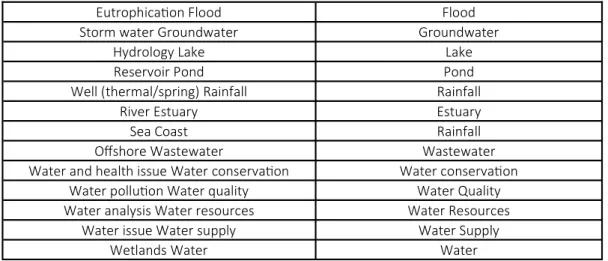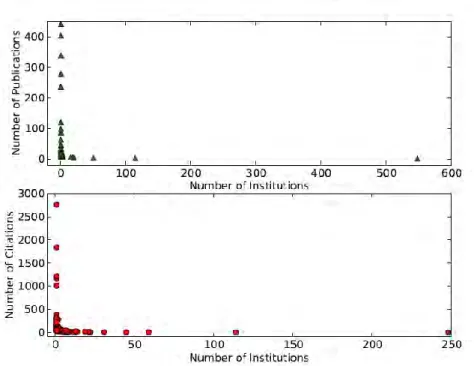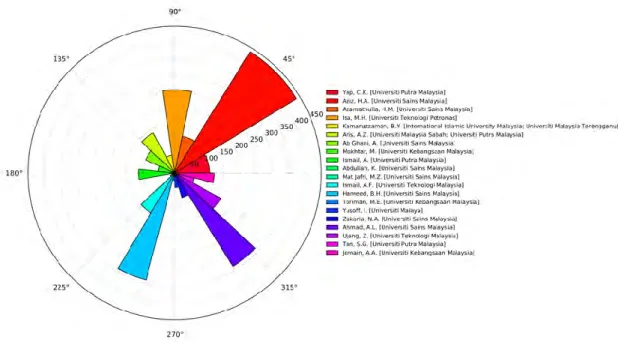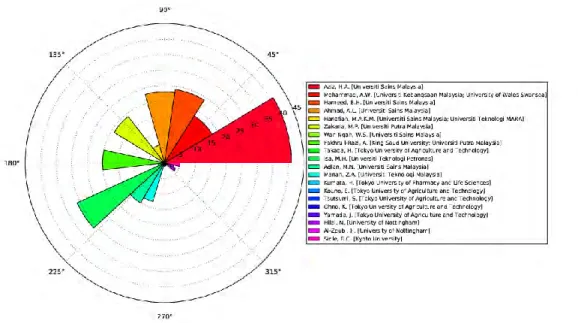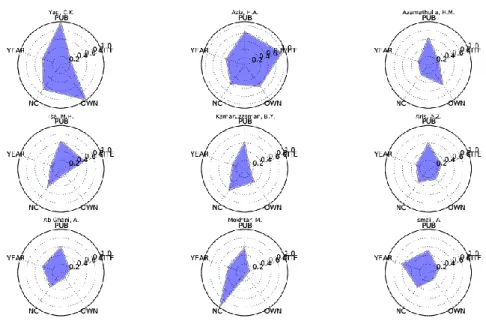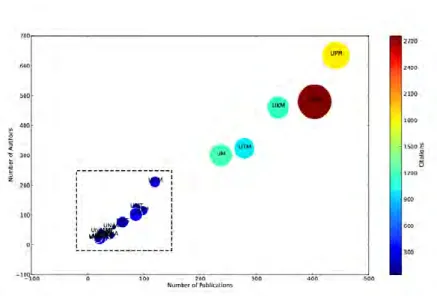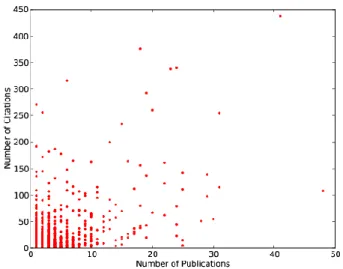Let me warmly welcome you to the first issue of the Journal of Research Management and Governance (JRMG). It is my pleasure to welcome the first issue of the Journal of Research Management and Governance (JRMG).
RESULTS AND DISCUSSION 1. Basic statistics
Authors analysis
However, authors with a large number of publications tend to be cited more often (12 out of 20 in Figure 3 have at least 100 citations). Some authors with high citations have a small number of publications (half of the twenty in Figure 4 have fewer than five publications).
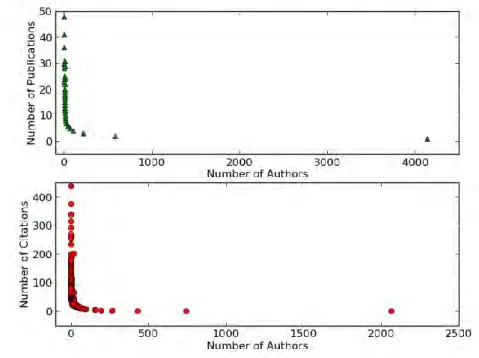
Institutional Analysis
The size of the bubbles is ∝ the number of citations (also marked as cool-warm color scheme). As the number of new authors increases, the number of publications typically increases, following an exponential trend (Figure 10).
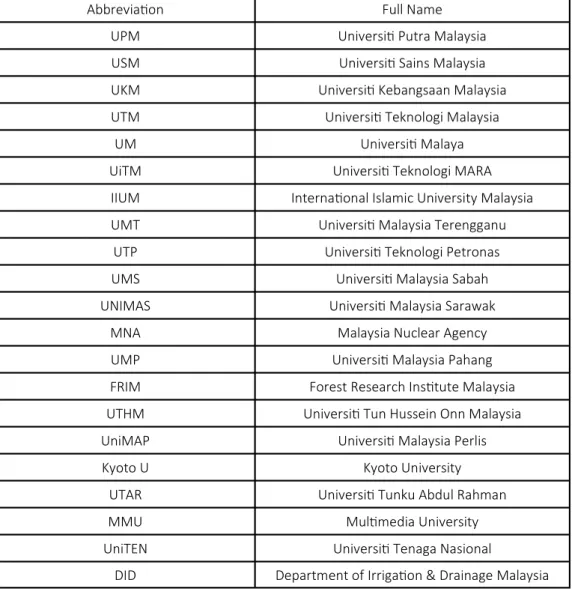
Authors’ Collaboration Network Analysis
If we look at the network created by the five main authors ranked by the number of collaborators, Mokhtar, M. Color represents the groups/communities discovered by Gephi and the size of the nodes is proportional to the number of publications of the node. Surprisingly, Yap, who has the most publications and the most collaborators, does not appear in any of the top five hubs.
The interactions between communities decreased as we move from Figure 23a to 23f, although the number of communities is more or less the same. Rank is based on eigenvector centrality score, Intra=number of intra-institution collaborators, Inter=number of inter-institution collaborators and Inter Inst=number of unique inter. The majority of the top 20 authors only collaborate with authors from the same institutions (true to the top 20 authors) and only four interact with authors from different institutions.
Ring segments are ordered by cumulative number of releases (starting at 12) and ring size is ∝ community size.
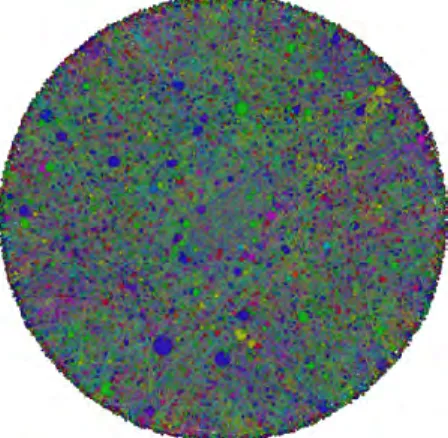
Institutions’ Collaboration Network Analysis
RUs generally have more foreign collaboration partners than local ones, although UKM's ratio of FOR/MAL is relatively lower. The lack of foreign collaboration partners may be due to the institutions' reputation (in our case, reputation within water research). FRIM has a higher number of foreign collaborators compared to local collaborators as it is the de-facto custodian of Malaysian forest (foreign institutions will certainly need a "local" contact, especially when the research is conducted in Malaysian forest).
This could also mean that foreign researchers are more interested in water research in Malaysian forests compared to local researchers. Kyoto University surprisingly has more foreign collaborators than Malaysian collaborators, even though the water research dataset is in Malaysia.
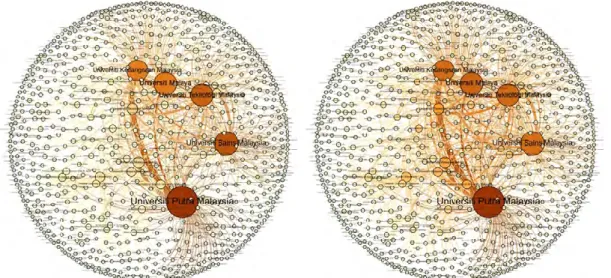
CONCLUSIONS
ACKNOWLEDGEMENTS
A historical review and bibliometric analysis of research on lead in drinking water from 1991 to 2007. Long-term changes in the aging of the scientific literature: From exponential growth to steady-state science (19002004). Evaluating research and impact: A bibliometric analysis of research from the nih/niaid hiv/aids clinical trials networks.
Google scholar as a source for citation and impact analysis for a non-ISI indexed medical journal.
Initializing multi-stakeholder engagement in the context of Marine Protected Area management
ABSTRACT
INTRODUCTION
As coastal populations grow exponentially, there is an increasing need to reconcile socio-economic demands and biodiversity protection goals (Klein et al., 2008; Mills et al., 2016). In Malaysia, the governance of MPAs has historically been top-down and often accompanied by complexities of management and overlaps of power (Islam et al., 2017). For example, the establishment of marine parks falls under the jurisdiction of the Sabah Wildlife Department and the Malaysian Marine Park Department; however the former reports to the state government and the latter works under the federal government.
Malaysian MPAs have also traditionally been designated as 'no-take', i.e. all forms of resource extraction are strictly prohibited, consequently changing the economic landscape for local communities that are directly dependent on its marine resources for food and a primary source of income (Islam et al. al., 2017). In Sabah, government agencies and non-governmental organizations (NGOs) have also attempted to develop MPA frameworks that include community consultations to ensure that biodiversity conservation locations are unanimously agreed upon while prescribing varying degrees of freedom to fish elsewhere ( Jumin et al., 2017; Sabah Parks, 2017). As the largest MPA in Malaysia supporting an abundance of marine life and ethnically diverse communities, TMP is jointly managed by various stakeholders based on the concept of co-management involving community participation at all stages of implementation (Sabah Parks, 2017; WWF-Malaysia , 2017).
While a wealth of previous case studies have discussed methods of stakeholder involvement in MPA spatial planning processes (Pomeroy & Douvere, 2008; Ritchie & Ellis, 2010; Gopnik et al., 2012), few have assessed stakeholder involvement in implementation stages where the capacity-building, recognized as a cornerstone for active stakeholder participation and knowledge sharing (Cuthill & Fien, 2005), is a central focus.
STAKEHOLDER ENGAGEMENT METHODS 1. Objective Setting
- Focus Group Discussions (FGDs)
- Interviews
- Reconnaissance Surveys
The aims of this paper are to provide insights into the types of information gathered through engagement methods, discuss associated challenges and present lessons learned. Questions were constructed to gain insight into an organization's activities, which stakeholders they worked closely with, trends they observed, and personal aspirations for the marine park. Observations were made on infrastructure conditions, lifestyle (i.e. nomadic, types of fisheries engaged in), general health of ecosystems, cleanliness, water supply and demographic factors (i.e. religion, ethnicity).
LESSONS LEARNED AND RECOMMENDATIONS 1. Mutual Trust among Stakeholders
- Understanding Stakeholder Dynamics
- Type of Information Gathered
- Failure and Recommendations
The team also conducted reconnaissance surveys in various locations, including beaches, villages, a copra processing farm, mangrove forest and bagang (a traditional wooden structure with a large net used to catch anchovies at sea) (Mohd Ariff & Mohammad Raduan, 2008). This understanding of complex stakeholder dynamics, often captured by either consensus or disagreement in opinion, is also consistently a key finding from FGDs across a wealth of global conservation literature (Ochieng et al. 2017). Finally, the reconnaissance surveys led to many important observations, including rainwater setups, water wells located near cemeteries, shortage of power and water supply, unmanaged garbage along the town's nearby beaches, and lack of basic infrastructure.
While reconnaissance surveys often produce biased results as they are usually conducted along available routes as opposed to randomly, they are useful in providing a quick general understanding of the area and important background information for future field work (Hurst & Allen, 2007). In summary, lessons learned from the TMP site visit include the importance of developing mutual trust among primary stakeholders, understanding local cultural and political contexts, and recognizing complex stakeholder dynamics – all of which are factors that have been shown to contribute significantly to successful MPAs on worldwide, including in the USA and the Caribbean (Pomeroy & Douvere 2008; Dalton, Forrester, & Pollnac, 2010). Our inability to have fair representation from the local community at our FGDs is likely due to lack of engagement with them prior to the stakeholder meeting.
This work has received support in part from the Global Challenges Research Fund (GCRF) UK via the delivery partner Research and Innovation (UKRI) under grant agreement reference NE/P021107/1 to the Blue Communities project.
Although the engagement techniques we used during our team's initial stakeholder engagement were successful in achieving most of our objectives, there was relatively little face-to-face interaction with individual stakeholder groups. We recommend that future researchers hold a town hall-style session with the local community as early as possible in the project to introduce its objectives and contributions and encourage their participation in future activities (Jones & Wells, 2007). This case study will be relevant to MPA conservation practitioners who wish to participate in complex governance systems with multiple levels of management and numerous stakeholders, especially where participatory methods and social inclusivity are important considerations in their design.
A special thanks to Sabah Parks and Banggi Coral Conservation Society for their generous logistical support during the first stakeholder engagement. Striking a balance between biodiversity conservation and socio-economic viability in the design of marine protected areas. Retrieved from https://www.theguardian.com/world/blog/2016/may/30/malaysia-just-established-a-one-million-hectare-marine-park.
Using focus group discussion methodology: Insights from two decades of application in conservation.
Realizing Research Impact and the Experience of a Malaysian University
- IMPACT OF UNIVERSITIES’ RESEARCH
- ASSESSMENT TOOL
- UNIVERSITY OF MALAYA’S JOURNEY AND EXPERIENCE
- CONCLUSIONS
Evaluating the impact of university research in Malaysia takes into account a wide range of parameters, from the immediate academic output in the form of journal articles and talent, to more direct outcomes with stakeholders in the adoption of products or services by industries and communities. Articles in indexed journals are accessible to the research community worldwide, and one measure of impact is the number of citations received in the published literature. Researchers must explain the possible outcome and impact of their work in the proposals.
We may see a move towards qualitative assessment of impact that we see in the UK and other countries. While we still measure input to research in terms of student numbers, award quantum and researcher qualification, and look at traditional research output, we are mindful of the importance of social or external impact as practiced in the UK. Research at UM from the early days was driven by the passion and commitment of our academics who truly enjoyed their work and believed in the importance of their contribution.
The analyzes showed that HIR really contributed significantly to the increase in the number of high-profile publications, which now achieve a high number of citations and partly contribute to the ranking of UM among the best-ranked universities in the world.
Philanthropic Fund Raising for Higher Education
- EARLY HISTORY OF GIVING TO THE CAUSE OF HIGHER EDUCATION
- UNIVERSITY FUNDRAISING IN DIFFERENT COUNTRIES 1. The USA
- The UK
- The EU
- FUNDRAISING MODELS
- MALAYSIAN SCENARIO
- CONCLUSION
In the US, fundraising for higher education has a deep-rooted foundation that dates back to the founding of Harvard College, as noted above. Giving to the cause of higher education can be linked to a larger culture of philanthropy in the US. The United Kingdom had a tradition of voluntary support for higher education in the early period (Proper, 2009).
But in the twentieth century, higher education in Britain was mainly supported by the government. The amount of funding raised for higher education in Britain is obviously lower than that in the US. The EU has also recently paid attention to fundraising for higher education (European Commission, 2006; European Commission, 2008; European Commission, 2011; Pérez-Esparrells, & Torre, 2012).
Fundraising for higher education is quite mature in the United States, which has an unbroken tradition for centuries.
